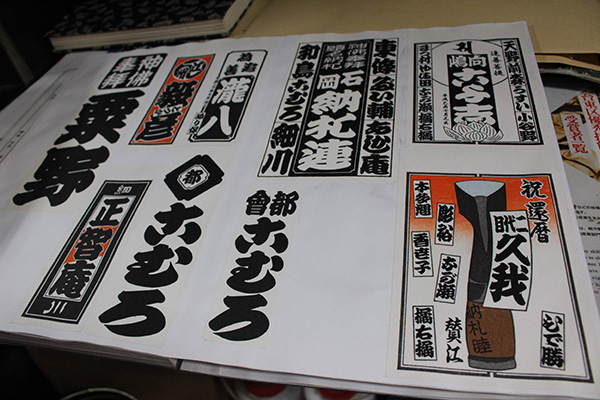Edo Moji (Edo-Style Characters)
 Edo-moji, said to have been developed at the end of the Edo period (1603-1867) is a unique hand drawn style of font still used today for Edo tegaki chochin lanterns, senshafuda (slips of paper posted on shrines and temples by pilgrims as a way of commemorating their visit, with their own names and addresses written on them), for sumo, rakugo, and kabuki listings. Splitting Edo-moji up into different categories yields Kanteiryu-moji (a font said to have been developed by Okazakiya Kanroku [1746-1805]) for the titles of kabuki plays; Sumo-moji used for sumo rankings; the yose-moji font originally written on handbills for rakugo performances; and the kago-moji style of characters used for senjafuda (though these are only Edo-moji in the narrow sense of the word). Edo-moji, with their strong impact thanks to their handwritten style and unique essence bring to life the popular culture and lives of those from the Edo period even today.
Edo-moji, said to have been developed at the end of the Edo period (1603-1867) is a unique hand drawn style of font still used today for Edo tegaki chochin lanterns, senshafuda (slips of paper posted on shrines and temples by pilgrims as a way of commemorating their visit, with their own names and addresses written on them), for sumo, rakugo, and kabuki listings. Splitting Edo-moji up into different categories yields Kanteiryu-moji (a font said to have been developed by Okazakiya Kanroku [1746-1805]) for the titles of kabuki plays; Sumo-moji used for sumo rankings; the yose-moji font originally written on handbills for rakugo performances; and the kago-moji style of characters used for senjafuda (though these are only Edo-moji in the narrow sense of the word). Edo-moji, with their strong impact thanks to their handwritten style and unique essence bring to life the popular culture and lives of those from the Edo period even today.


